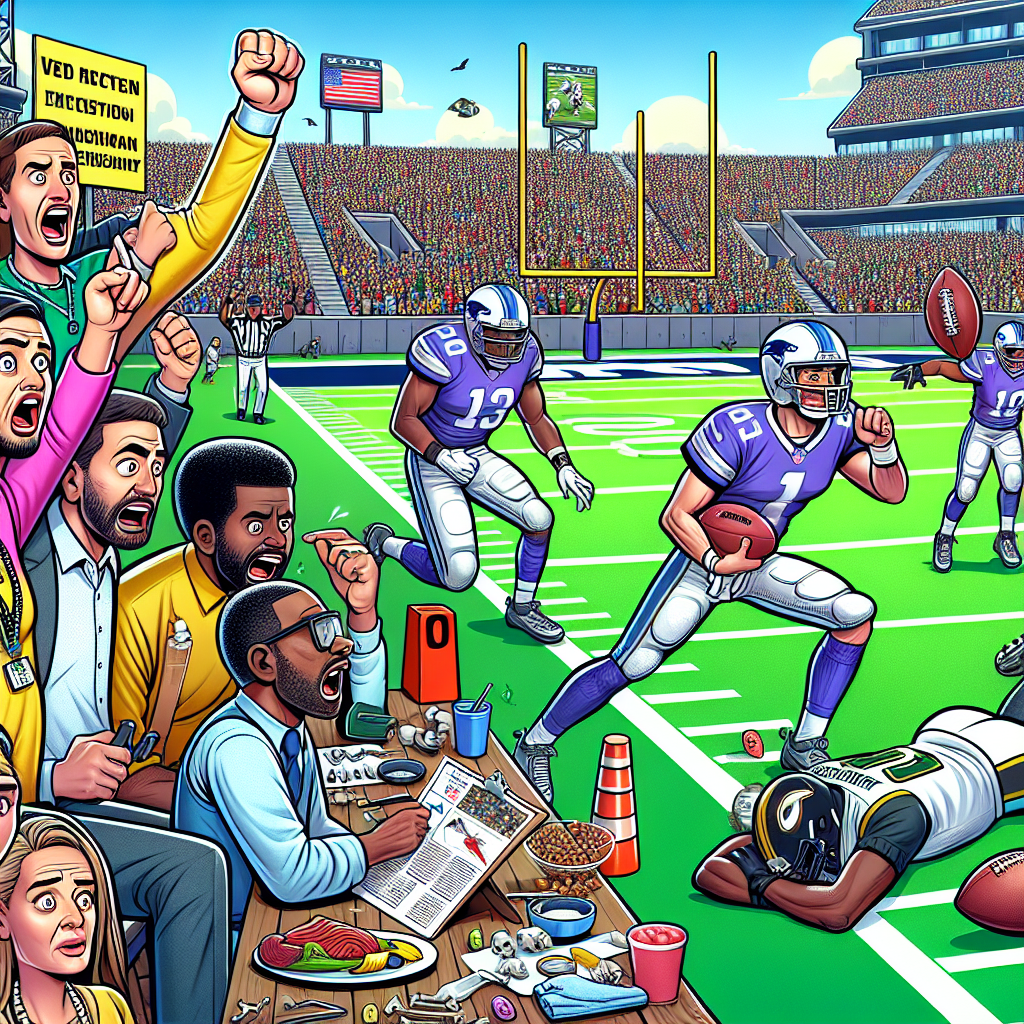NFL Week 2 Injury Report: An Exhibit in the Inevitable Fragility of Athletic Prowess

One might wonder, in the grand tapestry of professional football, whether the persistent parade of injury updates serves any purpose beyond inflaming the basest passions of the sports consuming public. Yet here we are, once again, grudgingly digesting the latest communiqué: Xavier Worthy, that mercurial speedster once heralded as a luminary among Chiefs’ weapons, has been pronounced “doubtful” for the upcoming clash, while the Falcons’ receivers apparently have received the fabled “green light.” Concurrently, the 49ers have deemed Brock Purdy indisputably out for this week’s encounter—a veritable trifecta of disappointment and reprieve that is, decidedly, nothing short of quotidian in today’s NFL landscape.
To approach this phenomenon with anything less than meticulous scrutiny would be to commit a grave oversight. Injuries in professional sports, particularly in the NFL, are not merely incidental footnotes; they are symptomatic of the underlying physical and systemic vulnerabilities that define this brutal gladiatorial enterprise. It is tempting to indulge the seductive allure of the narrative—injury as tragic fate, as merciless folly of chance, or alternatively, as design by malevolent opposition. However, such reductionist impulses must be eschewed in favor of a more rigorous, multi-dimensional appreciation of what these updates truly reveal: the ephemeral nature of athletic invincibility and the consequences of a sport predicated on sustained physical trauma.
Firstly, allow me to proffer a perspicuous observation: the very concept of “injury reports” implies an intrinsic expectation of absence wrought by physical debilitation, an expectation that has metastasized over the decades into an arena of both real concern and strategic ambiguity. Xavier Worthy’s dubious availability is emblematic. Once a heralded prodigy poised to redefine the Chiefs’ aerial attack, Worthy’s precarious status exemplifies the Sisyphean struggle athletes confront against their own corporeal limits. This is not mere happenstance, but a consequence of the Victorian-era logic embedded in modern football where the body is simultaneously a tool and a casualty.
The modern NFL athlete is, no doubt, a paragon of physical conditioning, yet no regimen or scientific advance can evade the lacunae in human biology. In the same vein as the legion of injured stars before him, Worthy’s near-certain absence is a reminder that the physical demands of football inherently court injury, especially among receivers whose roles necessitate rapid acceleration, precarious acrobatics, and relentless physical contact. Indeed, a footnote in the annals of sport medicine might suggest that his “doubtful” tag is a tacit acknowledgment of the unsustainable rate at which such talents are cannibalized by their own roles within the game’s design.
One must also scrutinize the linguistic gymnastics surrounding the “green light” issued to the Falcons’ receivers. This phrase, ostensibly buoyant, is redolent with a certain dialectical ambivalence frequently exploited by team medical staffs and coaching ensembles alike. It is an euphemistic flourish that purports readiness while simultaneously serving as a safeguard against premature exposure to risk, or worse, public criticism. The promulgation of such declarations is not without artifice and must be juxtaposed against the grim reality that many so-called “cleared” players enter high-velocity encounters armed with nothing more than hope and diagnostic equivocation.
Moreover, the definitive ruling out of Brock Purdy by the 49ers is a matter of grave consequence that transcends the banalities of roster management. Purdy, emblematic of the franchise’s recent offensive renaissance, being sidelined disrupts not only tactical configurations but also has psychological reverberations throughout the team and its fan base. Such an event underscores a rarely admitted truth: the NFL is a sport in which a single individual’s corporeal misfortune can recalibrate the fortunes of entire organizations. “Rule Out” is, therefore, less a mere clinical status and more a potent symbol of the fragile interdependency that enmeshes players, coaches, and supporters alike.
It behooves us, then, to engage in a brief excursus grounded in the venerable wisdom of the ancients. Marcus Tullius Cicero, in his De Officiis, extolled the virtues of steadfastness and prudence, cautioning against the hubris that blinds one to inevitable misfortune. The NFL’s injury carousel is a modern manifestation of this perennial uncertainty. The exuberant optimism of “game-time decisions” and “green light” pronouncements must be tempered with a sober appreciation that injury, like death, is the great equalizer. Just as nihilism pervades the contemplations of the fateful Stoics, so too must fans cultivate equanimity in the face of the inevitable roster attrition afflicting their beloved squads.
In conclusion, what lessons might the perspicacious observer derive from the latest iteration of the injury report? Foremost, it is a humbling reminder that modern athleticism, for all its marvels, remains shackled to the fundamental frailties of human physiology. The fluctuating statuses of Xavier Worthy, the Falcons’ receivers, and Brock Purdy are emblematic microcosms of broader truths: the delicate balance between strength and fragility, the mercurial nature of fortune, and the relentless march of consequence that typifies professional football.
Thus, as the injuries pile up and the reports proliferate with every successive NFL weekend, one ought not to view these simply as interruptions to mere entertainment, but as profound markers of a sport that, in all its spectacle, wrestles continuously with the corporeal limitations of its participants. A truly intellectual engagement with the NFL’s injury report necessitates recognizing that beneath the headlines lies a somber meditation on the human condition, clad in helmets and pads, hurtling toward an uncertain destiny.

